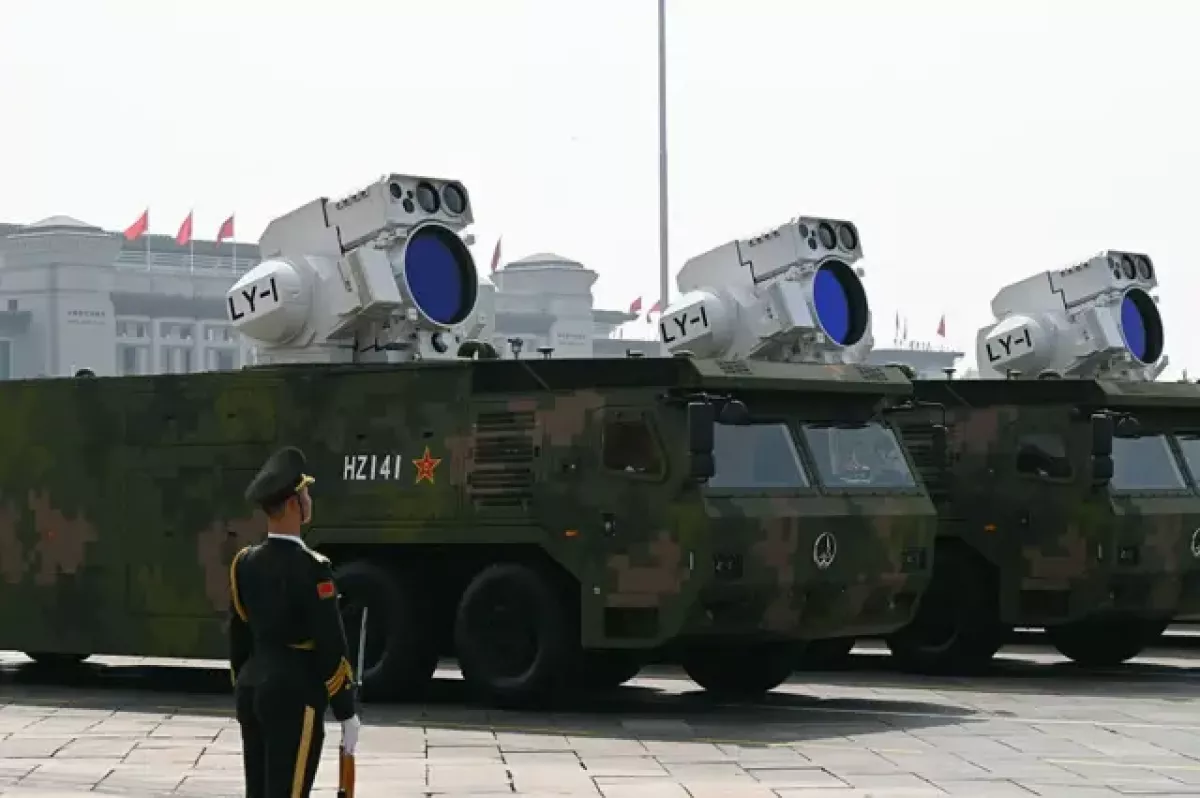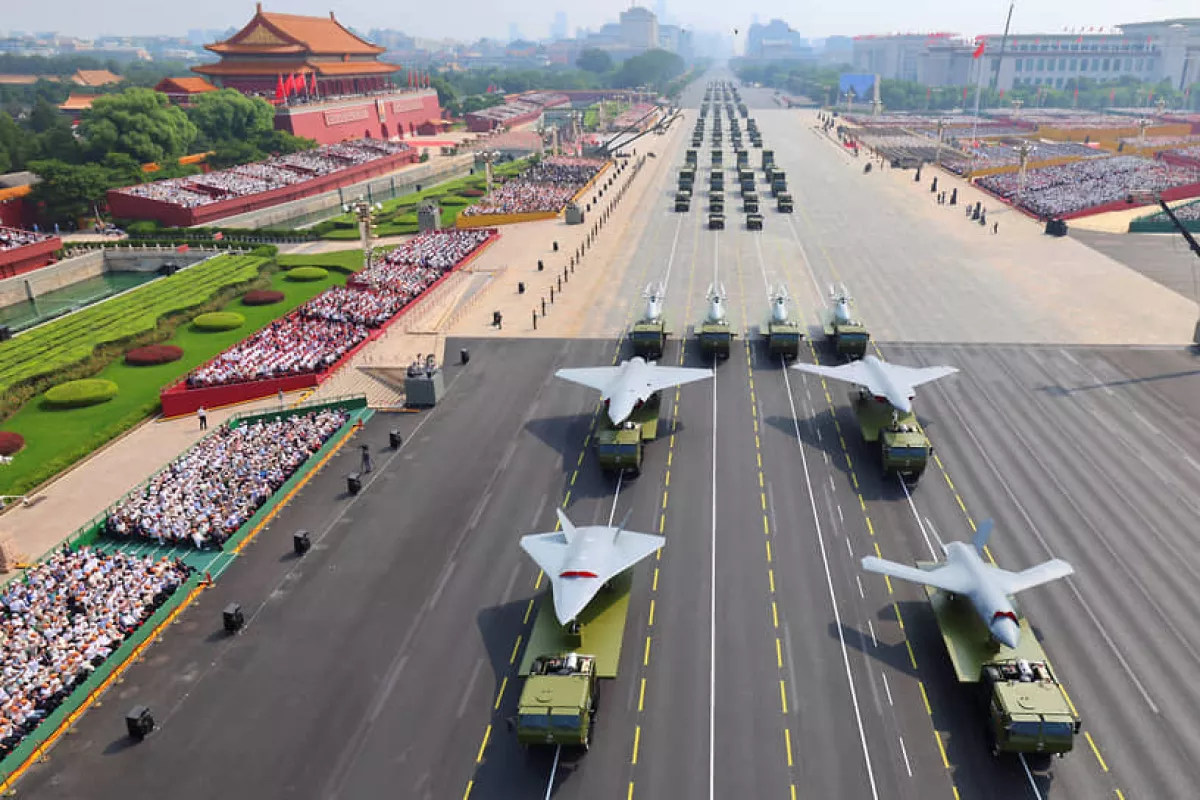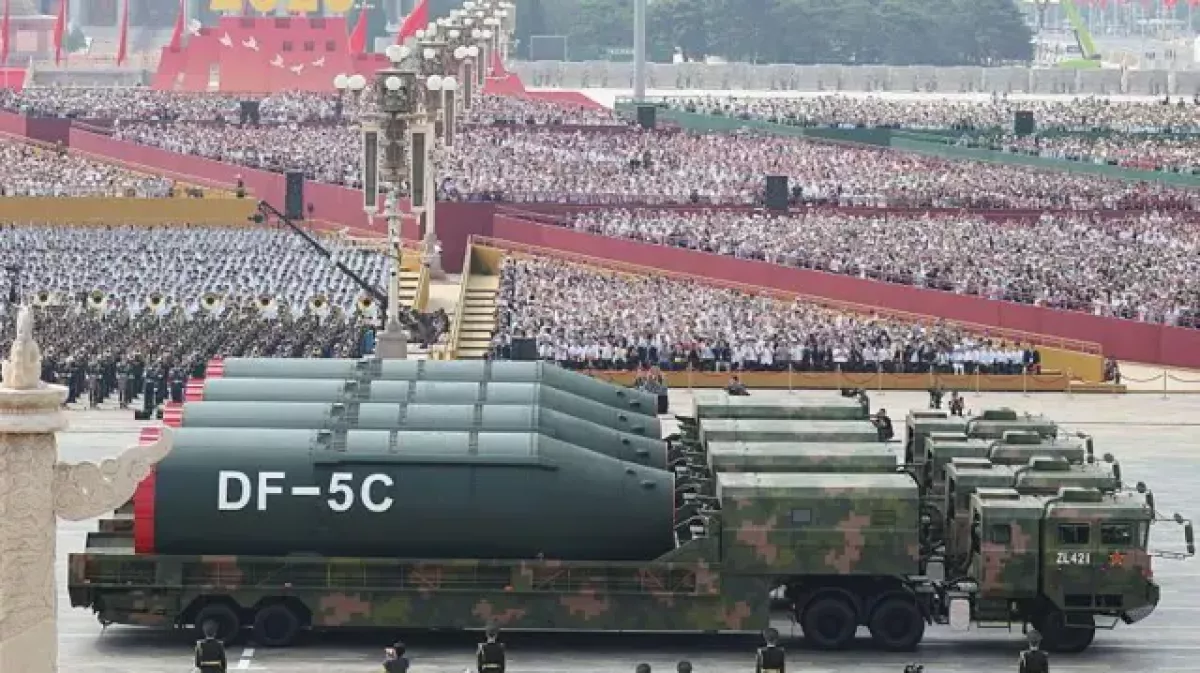Chinese power vs. America’s steel armada Tiananmen parade sends strong messages to the world
Last week, the world’s attention was entirely drawn to China, which hosted the Shanghai Cooperation Organisation (SCO) summit and held a military parade marking the 80th anniversary of victory in the War of Resistance Against Japanese Aggression and in World War II.
On Tiananmen Square in Beijing, where the People’s Liberation Army of China (PLA) showcased its strength, leaders of more than twenty countries were present, all interested in deepening economic and military ties with Beijing.
Before the distinguished guests, columns of thousands of soldiers and the latest weapons systems marched in formation — drones, precision long-range missiles, and even combat robots. Opening the parade, Chinese President Xi Jinping declared: “The great rejuvenation of the Chinese nation cannot be stopped. The noble cause of peace and the development of humanity will undoubtedly prevail!”
Particular interest was drawn to China’s missile systems, especially their new modifications. Among them were the Dongfeng-61, capable of carrying multiple warheads in its conical nose section; the Dongfeng-5C intercontinental ballistic missile, able to strike targets in the United States from northern China; and the Dongfeng-26D medium-range missile, nicknamed the “Guam Killer” for its ability to hit strategically important U.S. Air Force facilities on Guam. The parade also featured several hypersonic anti-ship missiles, such as the YJ-17 and YJ-19, which, through manoeuvrability and high speeds, can evade naval air defence systems.
The focus on missiles is no coincidence. China is developing missile systems as a key element of its deterrence strategy and as a counterbalance to U.S. naval superiority. The United States Navy remains unmatched thanks to the world’s largest fleet of nuclear-powered aircraft carriers and carrier strike groups. While China still lags in the number of carrier vessels, some Western defence experts increasingly argue that U.S. carriers are vulnerable to massed missile attacks. By deploying its latest missile systems, Beijing is not only pursuing a policy of deterrence but also creating the capability for a “second strike” in the event of an attack.

Another much-discussed Chinese innovation was the LY-1 laser weapon, essentially a giant laser capable of burning out or disabling electronics, blinding pilots, and even targeting fifth-generation stealth fighters, including the J-20 and J-35.
At the Beijing parade, China also showcased significant progress in the development of artificial intelligence-powered drones. One of the highlights was the massive AJX-002 underwater drone, also known as an extra-large unmanned undersea vehicle (XLUUV). Measuring 20 metres in length, it is designed to carry out surveillance and reconnaissance missions. Another favourite was the stealth strike drone GJ-11, nicknamed the “loyal wingman.” It can fly alongside manned fighter jets and assist them in combat operations.
In addition to numerous conventional aerial drones, the parade also featured combat quadruped robots. Experts believe these machines can be used for a variety of tasks, ranging from reconnaissance and mine clearance to tracking enemy soldiers.

According to Michael Raska, Associate Professor in the Transformation Programme at Nanyang Technological University (NTU) in Singapore, China has drawn lessons from the war in Ukraine, where the use of drones helped weaken enemy defences. Beijing seeks to advance a military strategy in which many traditional structures will be replaced, and decisions will be made in “nanoseconds” with the help of artificial intelligence. While many fear the consequences of using AI in warfare, Raska notes that the Chinese “believe they can control AI. They are going all the way to integrate it into their systems.”
Western experts point out that the parade demonstrated China’s ability to establish mass production of the most modern and high-tech weaponry. As Raska explains, ten years ago the military technologies displayed by China were “rudimentary copies” of more advanced weapons developed in the United States, Europe, and Russia. This time, however, the parade showcased innovative and diverse armaments, including the latest drones and missiles — clear evidence of the high level of development of China’s defence industry.
In turn, Alexander Neill, Research Fellow at the Hawaii-based Pacific Forum think tank, emphasises that China’s tightly organised power structure and vast resources will allow it to produce new weapons much faster than its rivals, and in far greater numbers — giving it both numerical and firepower advantages on the battlefield. According to Neill, “China has the ability to churn out munitions, ships, all these platforms... the state can just make these directives and off they go.”
Michael Raska, however, argues that China still needs to learn how to integrate its various weapons systems. This will not be easy, as the Chinese military, despite its large size, lacks real combat experience — the last time China’s armed forces fought in a war was in the late 1970s.
In conclusion, the Beijing parade carried major ideological significance, intended to highlight China’s role in the victory over the Axis powers in World War II — a conflict the country refers to as the War of Resistance Against Japanese Aggression.
“Having made enormous sacrifices, the Chinese people made a significant contribution to saving human civilisation and ensuring peace throughout the world,” Xi Jinping declared at the parade.

Among Chinese citizens, the parade sparked a wave of enthusiasm and national pride. “I am in tears after watching! This means so much to us!” wrote one user on the Chinese social media platform Weibo in a thread dedicated to the event. Another commented: “I am grateful to our country for making us feel so safe!”
Some observers have described the parade on Tiananmen Square as a massive advertising campaign for Chinese weapons aimed at potential buyers — especially given the large number of distinguished foreign guests in attendance. Arms sales, after all, have long been a traditional means of expanding geopolitical influence. For example, Myanmar purchases a vast quantity of Chinese weapons every year.
Another important undertone of the event was the issue of Taiwanese separatism. As Charles Parton, Senior Fellow at the Royal United Services Institute, noted, “Taiwan is the great unspoken piece of the parade.” By displaying its military might, Beijing, he explained, was “sending a message to the Taiwanese that resistance is futile.”
The parade also demonstrated that, if necessary, China is capable of defending its interests not only through economic means but also with military power — and that it has allies across different regions of the world. According to Alexander Neill, the line-up of foreign leaders invited to the parade indicated that, should the United States decide to challenge China, it would mean “fighting them on several potential theatres at the same time – the Korean peninsula, Taiwan Straits, and Ukraine.”








